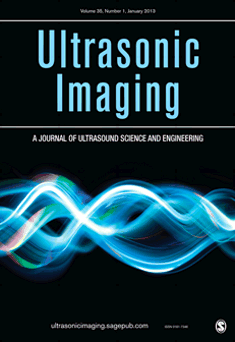
ULTRASONIC IMAGING
Scope & Guideline
Bridging Theory and Practice in Ultrasonic Imaging
Introduction
Aims and Scopes
- Ultrasound Imaging Techniques:
The journal publishes research on various ultrasound imaging techniques including B-mode, Doppler, and contrast-enhanced ultrasound, emphasizing advancements in image quality and diagnostic capabilities. - Machine Learning and Deep Learning Applications:
A significant focus is on the application of machine learning and deep learning algorithms for automating image analysis, segmentation, and classification of ultrasound images, enhancing diagnostic accuracy. - Quantitative Ultrasound and Elastography:
Research on quantitative ultrasound methods, including elastography, is prominent, highlighting the use of ultrasound in assessing tissue stiffness and characterizing various medical conditions. - Clinical Applications of Ultrasound:
The journal emphasizes clinical relevance, showcasing studies that explore the application of ultrasound imaging in oncology, cardiology, musculoskeletal disorders, and other medical fields. - Innovative Imaging Technologies:
Research that introduces novel imaging technologies or improvements to existing ultrasound systems is a core area, with a focus on enhancing imaging capabilities and patient outcomes.
Trending and Emerging
- Integration of Artificial Intelligence:
There is a notable trend towards integrating artificial intelligence and deep learning into ultrasound imaging for automated analysis, segmentation, and improved diagnostic capabilities. - Multimodal Imaging Approaches:
Research is increasingly focusing on multimodal imaging techniques that combine ultrasound with other imaging modalities such as MRI and CT, enhancing diagnostic accuracy and providing comprehensive assessments. - Personalized Medicine Applications:
Emerging themes include the application of ultrasound in personalized medicine, with studies focusing on predicting treatment responses and tailoring interventions based on ultrasound findings. - Advanced Elastography Techniques:
The field is seeing a rise in advanced elastography techniques that provide more detailed assessments of tissue properties, particularly in oncology and liver disease. - Tele-ultrasound and Remote Diagnostics:
With the growth of telemedicine, there is an increasing interest in tele-ultrasound applications, allowing for remote diagnostics and consultations, especially in underserved areas.
Declining or Waning
- Traditional Ultrasound Techniques:
Research centered on traditional ultrasound techniques without innovative enhancements or applications has diminished, as the field increasingly embraces advanced technologies and methodologies. - Basic Ultrasound Physics:
Publications focused solely on the fundamental physics of ultrasound are less frequent, suggesting a shift towards practical applications and clinical relevance rather than theoretical exploration. - Conventional Image Processing Methods:
Conventional image processing techniques are being overshadowed by advanced machine learning approaches, leading to a decline in research focused on traditional algorithms. - Generalized Clinical Studies:
Studies that do not leverage novel imaging technologies or specific clinical applications are becoming less common, as the journal increasingly prioritizes targeted research that demonstrates clear clinical impact.
Similar Journals

Japanese Journal of Radiology
Elevating Radiology Research to New HeightsThe Japanese Journal of Radiology, published by SPRINGER, serves as a premier platform for disseminating cutting-edge research and clinical advancements in the fields of radiology, nuclear medicine, and imaging. With an ISSN of 1867-1071 and E-ISSN 1867-108X, this journal has established itself as a vital resource for practitioners, researchers, and students alike. Renowned for its high-quality peer-reviewed articles, it currently enjoys a respectable impact factor within the Q2 category of Scopus rankings, placing it in the 69th percentile among 333 journals in its field. The journal has seen consistent convergence of research from 2009 to 2024, further underscoring its commitment to advancing the understanding of radiological practices. Importantly, the journal offers Open Access options to facilitate widespread dissemination of knowledge, ensuring that vital research reaches its audience without barriers. Addressed in Japan, the Japanese Journal of Radiology plays a critical role in enhancing the global discourse on medical imaging, making it an essential resource for anyone engaged in this dynamic field.
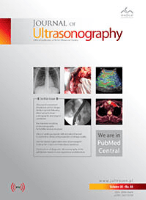
Journal of Ultrasonography
Elevating Standards in Radiology and Ultrasound ResearchJournal of Ultrasonography, published by SCIENDO, is a vital open-access platform for advancing knowledge and research in the fields of Radiology and Ultrasound Technology. Since its inception in 2013, this journal has provided a forum for practitioners and researchers to share innovative findings and critical insights, making it an essential resource for professionals in the medical imaging community. With an ISSN of 2084-8404 and an E-ISSN of 2451-070X, the journal aims to enhance clinical practice and foster academic growth through rigorous peer-reviewed publications. Notably, it has achieved a Q3 ranking in both Radiological and Ultrasound Technology and Radiology, Nuclear Medicine and Imaging, reflecting its commitment to quality and relevance. Based in Germany, it has also emerged as a significant contributor to the global discourse in medicine, currently ranked in the 39th percentile within its niche disciplines according to Scopus. The journal is uniquely positioned to serve as a conduit for innovative research, making it indispensable for researchers, healthcare practitioners, and students dedicated to the advancement of ultrasonography.
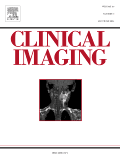
Clinical Imaging
Innovating Radiology Through Cutting-Edge ResearchClinical Imaging, published by Elsevier Science Inc, is a renowned journal dedicated to the field of radiology, nuclear medicine, and imaging. With an ISSN of 0899-7071 and an E-ISSN of 1873-4499, this esteemed publication has established its significance in advancing imaging science since its inception in 1989 and continues to make impactful contributions to the discipline through 2024. The journal holds a prestigious Q2 ranking in the category of Radiology, Nuclear Medicine, and Imaging, reflecting its critical role in bridging research and clinical practice. Currently ranked #113 out of 333 by Scopus, with a notable 66th percentile, it offers a platform for disseminating high-quality research, reviews, and case studies that inspire innovation and enhance imaging techniques. Although it primarily functions as a subscription-based journal, it remains dedicated to accessibility and the dissemination of pivotal findings that inform both academia and clinical settings. Clinical Imaging is essential for researchers, professionals, and students alike, offering insights that shape the future of diagnostic imaging.

Iranian Journal of Radiology
Transforming Radiology with Cutting-Edge StudiesWelcome to the Iranian Journal of Radiology, a pivotal platform dedicated to advancing the field of radiology, nuclear medicine, and medical imaging. Published by BRIEFLAND, this journal aims to disseminate high-quality original research, reviews, and clinical studies that contribute substantially to the global scientific community. Established in 2008 and spanning until 2024, the journal provides an essential archive of knowledge in a rapidly evolving discipline. Although it currently holds a Q4 quartile ranking in the 2023 Scopus metrics, it serves as an important resource for both emerging and established researchers looking to submit their work. Located in the Netherlands, the journal is committed to open dialogue and collaboration amongst professionals in the field, reflecting its accessibility and relevance to both practitioners and academics. With its continued growth and commitment to quality, the Iranian Journal of Radiology is poised to enhance understanding and innovation in diagnostic imaging.
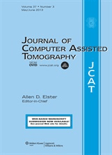
JOURNAL OF COMPUTER ASSISTED TOMOGRAPHY
Transforming Imaging Sciences for Tomorrow's ChallengesJOURNAL OF COMPUTER ASSISTED TOMOGRAPHY, published by Lippincott Williams & Wilkins, stands as a vital resource in the field of Radiology, Nuclear Medicine, and Imaging. Since its inception in 1977, this journal has been dedicated to advancing the understanding and application of computer-assisted tomography, emphasizing innovative research and clinical practices that enhance diagnostic imaging techniques. With an impact factor reflective of its rigorous scholarship and relevance—ranking in the Q3 category—the journal serves as an essential platform for contributors and readers alike, navigating the challenges and opportunities within a rapidly evolving field. Researchers, professionals, and students are encouraged to engage with the rich repository of articles that cover emerging technologies, clinical applications, and theoretical advancements, collectively fostering a deeper comprehension of imaging sciences. Although not currently designated as an open-access journal, it continues to enhance discourse in the community from its headquarters in Philadelphia, PA, maintaining a commitment to the highest standards of academic excellence.

Ultrasonography
Exploring Innovations in Imaging and DiagnosticsUltrasonography is a prominent open-access journal published by the Korean Society of Ultrasound Medicine, dedicated to advancing the field of medical imaging and ultrasound technology. Since its inception in 2013, the journal has provided a platform for high-quality research, review articles, and advancements in ultrasonography, filling vital knowledge gaps in the radiology, nuclear medicine, and imaging sectors. With an impressive Q2 rank in its category for 2023 and a placement in the 71st percentile according to Scopus metrics, Ultrasonography serves as a crucial resource for researchers, practitioners, and students alike. Based in South Korea, it continues to attract a global audience by offering valuable insights into the latest techniques, technologies, and applications of ultrasound in clinical practice and diagnostics. Academics can access this comprehensive journal freely, fostering greater dissemination of knowledge in the ultrasound community.

Chinese Journal of Academic Radiology
Exploring the Future of Imaging Technology and Patient OutcomesChinese Journal of Academic Radiology is a leading publication in the field of Radiology, Nuclear Medicine, and Imaging, published by SpringerNature. With an ISSN of 2520-8985 and E-ISSN 2520-8993, the journal aims to bridge the gap between academic research and practical application in radiological sciences. Recognized for its contributions to the advancement of imaging technology and patient care, it currently holds a Q3 quartile ranking for 2023. The journal has a commitment to sharing innovative research findings that address pressing challenges in the field, thereby fostering collaboration and knowledge exchange among researchers, professionals, and students. Although it does not currently offer open access options, the journal's comprehensive reviews and high-quality research articles present a significant resource for those seeking to deepen their understanding of radiological practices and innovations. The Chinese Journal of Academic Radiology continues to play a vital role in shaping the future of radiological science through rigorous scholarship and global discourse.

European Radiology Experimental
Advancing Radiology Through Innovative ResearchEuropean Radiology Experimental is a premier open-access journal published by Springer Wien, dedicated to advancing the field of radiology through innovative research and experimentation. Since its establishment in 2017, the journal has quickly gained recognition, evidenced by its impressive Q1 ranking in the Radiology, Nuclear Medicine and Imaging category, and its placement within the top 83rd percentile of the Scopus rankings. Based in the United Kingdom, this journal aims to bridge the gap between clinical practice and cutting-edge research, providing a platform for rigorous peer-reviewed articles that explore new methodologies, technologies, and insights in radiological sciences. With a commitment to open access, European Radiology Experimental ensures that its content is readily accessible to a global audience, supporting the dissemination of knowledge and fostering collaborations among researchers, professionals, and students in the medical imaging community. As it progresses through its convergence years, the journal continues to play a vital role in shaping the future of radiological research and practice.
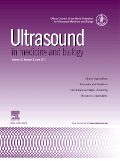
ULTRASOUND IN MEDICINE AND BIOLOGY
Revolutionizing Diagnostics with Ultrasonic DiscoveriesULTRASOUND IN MEDICINE AND BIOLOGY, published by Elsevier Science Inc, stands as a premier journal in the field of acoustics and ultrasonics, boasting an impressive impact factor that reflects its significant contribution to both theoretical and applied research. With its extensive scope covering advancements in biophysics, radiology, and ultrasound technology, the journal invites original research articles, reviews, and technical notes that explore the vast potential of ultrasound across various medical applications. Since its inception in 1973, the journal has carved a niche in the academic community, evidenced by its Q1 ranking in Acoustics and Ultrasonics and a commendable presence in other related fields. Though it does not currently offer an Open Access option, it remains accessible to a global audience of researchers, professionals, and students dedicated to the innovation of ultrasound methodologies and their clinical implications. The journal aims to foster a deeper understanding of the interplay between ultrasound technology and biological systems, thereby driving forward the frontiers of healthcare and diagnostic imaging.

Tomography
Bridging the gap between research and clinical application.Tomography is an esteemed peer-reviewed journal published by MDPI, focusing on a broad spectrum of topics related to medical imaging and diagnostics. Launched in 2015, this Open Access journal serves as a vital platform for researchers, professionals, and students in the fields of medicine, radiology, nuclear medicine, and imaging. With an impressive impact factor reflecting its relevance, the journal has achieved a quartile ranking of Q2 in both Medicine (Miscellaneous) and Radiology, Nuclear Medicine, and Imaging as of 2023. Renowned for disseminating high-quality research, Tomography welcomes original research articles, reviews, and technical notes, fostering innovation and collaboration within the scientific community. Housed in Basel, Switzerland, the journal aims to bridge the gap between fundamental research and clinical application, appealing to a diverse readership eager to advance the field of medical imaging.